Higher Performance Insights | The Great Sort: Why AI Is About to Separate the Pros from the Pretenders
3-minute read | Educational Leadership | AI Transformation
The reckoning is here. And it's magnificent.
😬 The registrar who spends her day manually processing enrollment data is nervous.
😬 The high school principal who hides behind email instead of classroom visits is sweating.
😬 The college professor who's been using the same lecture slides since 1987 can't sleep.
😬 The chair who measures success by committee memberships is updating his résumé.
😬 The superintendent who counts meetings instead of measuring student growth is reconsidering retirement.
This exodus, while painful, is creating space for purpose-driven professionals to thrive.
The Beautiful Disruption We've Been Waiting For
Since Horace Mann opened the first public school in 1837 and the Morrill Act established land-grant universities in 1862, we've been building something extraordinary: educational systems designed to serve every learner, whether a kindergartner taking their first steps toward literacy or a doctoral student pushing the boundaries of human knowledge. The most audacious social experiment in human history—accessible education from cradle to career.
But somewhere along the way, we drifted from our purpose.
People began showing up for paychecks instead of transformation. Summer breaks became vacations instead of preparation time for K-12 educators, while higher ed treated sabbaticals as escapes rather than renewal opportunities. Children became test scores, students became enrollment numbers, and learning became box-checking, whether in elementary classrooms or lecture halls.
AI is about to change that.
And those who've lost sight of education's true purpose are discovering their approach no longer works.
If you're feeling unsettled reading this, that's understandable. Change this significant challenges everyone—even those doing exceptional work. The question isn't whether you're "good" or "bad" at education. It's whether you're ready to evolve into the professional you became an educator to be.
🔍 The Jaw-Drop Research
Ninety-four percent of educational technology leaders see AI's potential for positive impact (CoSN, 2025), but here's what they're not telling you: Industry analysts predict nearly half of entry-level administrative positions could be automated within five years (Amodei, 2024).
MIT researchers discovered something profound: AI tools reduce brain activity in memory-related areas by 25-40%, with measurable decreases in creativity and recall when used as cognitive substitutes rather than amplifiers (MIT Technology Review, 2025).
Translation: If you're using AI as a crutch, you're becoming less capable. If you're using AI as a tool, you're becoming superhuman.
The human cost is staggering: 44% of K-12 teachers report frequent burnout, making education the profession with the highest burnout rates in America (Research.com, 2025). Meanwhile, 73% of higher education faculty members report feeling overwhelmed by administrative demands that divert attention from teaching and research. Teacher turnover reached 23% in K-12 schools during 2023-24, while universities face record faculty departure rates with 30% of new assistant professors leaving within five years (Education Resource Strategies, 2025; National Education Association, 2025).
But here's what the data doesn't reveal: The right people are staying.
The system is sorting itself.
⚡ WHAT TRADITIONALIST EMPLOYEES WILL HATE
The Data Entry Professionals
Every registrar whose primary value lies in moving information between student information systems faces obsolescence. Every admissions coordinator manually tracking applications. Every academic affairs assistant updating spreadsheets that could sync automatically. AI processes this data faster, more accurately, and without coffee breaks. But the ones worth keeping aren't worried—they're excited about focusing on what humans do best: solving complex problems, building relationships, and making meaningful connections with students and families.
The Content Recyclers
K-12 teachers who mistake busyness for learning and college professors who've taught the same course identically for decades are discovering that AI generates both worksheets and lecture content more efficiently than they can. The beautiful irony? Students immediately recognize AI-generated materials. When a machine can replicate your primary teaching tool, what unique value do you bring to learning?
The Meeting Multipliers
School administrators who confuse leadership with scheduling more meetings and university department chairs who think governance means endless committee work are finding that AI can summarize, synthesize, and strategize without the performance theater. Real leaders don't fear this—they celebrate it. More time for what actually moves the needle: developing people and creating conditions for growth.
The Curriculum Controllers
District bureaucrats who believe K-12 education occurs in pacing guides and university administrators who think learning happens in course catalogs are watching their empires become increasingly irrelevant. AI writes curriculum and designs degree programs faster than committees can approve them. The crucial question emerges: What do you actually contribute to the learning process?
🚀 WHAT PURPOSE-DRIVEN PROFESSIONALS WILL LOVE
The Relationship Builders
Teachers who understand that learning is fundamentally relational are becoming invaluable. AI cannot build trust with a struggling student. It cannot recognize the flash of understanding in curious eyes. It cannot provide comfort when a child's world falls apart. As digital connections increase and human connections become scarcer, relational depth and authentic care grow exponentially in value.
Sarah, a third-grade teacher in Denver, discovered this firsthand. When AI began handling her lesson planning and worksheet creation, she found herself with an extra hour daily. Instead of more paperwork, she used it for one-on-one reading conferences. Her students' engagement scores increased 40% in one semester—not because of better worksheets, but because of deeper relationships.
The Learning Architects
Educators who design experiences rather than deliver content are gaining superpowers. AI handles information transfer efficiently. Humans handle transformation masterfully. Suddenly, you can focus entirely on what only humans accomplish: making meaning, fostering curiosity, inspiring growth.
Principal Marcus in Phoenix restructured his entire approach when AI began generating his weekly reports in minutes rather than hours. He now spends those reclaimed hours in classrooms, coaching teachers, and observing learning.
The Vision Keepers
Leaders who actually lead—who cast compelling visions, develop people, and solve complex problems—are discovering that AI eliminates the administrative nonsense that's been distracting them from their real work. Adaptive leaders who focus on agility, resilience, and proactive problem-solving are thriving like never before.
The Student Advocates
Everyone who entered education to transform lives is finding that AI removes the barriers keeping them from their purpose. Less paperwork. Fewer compliance hoops. More time with students.
Superintendent Dr. Lisa in Portland and University President Dr. James at a regional state university implemented AI for routine data analysis and discovered something remarkable: their leadership teams went from spending 60% of their time on administrative tasks to 30%. She redirected that energy into professional development and early literacy initiatives; He focused on faculty research support and student mental health programs.
The Transformation We've Been Waiting For
Here's what most education leaders don't understand: AI isn't changing education. It's revealing education.
For the first time since Mann and Morrill, we can actually deliver on education's promise across the entire learning continuum:
Truly Personalized Learning - Not the superficial kind, where K-12 students receive worksheets with their names printed on top, or where college students receive mass emails addressed "Dear Student." Real personalization where AI handles individual practice, feedback, and pacing for both the struggling third-grader and the advanced graduate student, while educators focus on the irreplaceable human elements: motivation, meaning-making, and growth mindset development.
Authentic Assessment - When AI can generate any content instantly, memorization becomes meaningless, whether in elementary school or doctoral programs. We finally must assess what actually matters: critical thinking, creative problem-solving, collaborative communication, and adaptive learning. The skills that make humans irreplaceable at every educational level.
Teaching as a True Profession - Research consistently shows that both K-12 teachers and university faculty stay when they feel engaged, supported, and professionally empowered (PowerSchool, 2025). AI eliminates the clerical drudgery that's been crushing educator morale across all levels. Suddenly, teaching becomes what it was always supposed to be: a professional endeavor focused on human development and intellectual growth.
Leadership as a Service - When AI handles data analysis, report generation, and routine decision-making, leaders from elementary principals to university presidents can focus on their actual purpose: developing people, casting vision, and creating conditions where learning thrives.
📊 Your AI Readiness Assessment: Where Do You Stand?
Take this diagnostic to understand your current position in the transformation:
FOR K-12 TEACHERS
Rate yourself (1-5) on these statements:
- I'm excited about AI handling routine tasks so I can focus on student relationships
- I see technology as amplifying my teaching rather than replacing it
- I regularly update my skills to stay relevant in changing educational landscapes
- Students seek me out for guidance that goes beyond content delivery
- I focus more on developing thinking skills than transferring information
FOR HIGHER ED FACULTY
Rate yourself (1-5) on these statements:
- I view AI as freeing me to focus on mentoring and original research
- I'm adapting my courses to emphasize critical thinking over information recall
- I actively engage with educational technology to enhance student learning
- Students see me as a guide for intellectual development, not just a lecturer
- I'm excited about spending less time on grading and more time on meaningful feedback
FOR K-12 ADMINISTRATORS
Rate yourself (1-5) on these statements:
- I spend more time developing people than processing paperwork
- I use data to inform decisions rather than just comply with reporting requirements
- Teachers actively seek my feedback and guidance for professional growth
- I regularly question whether our systems serve learning or just tradition
- I can articulate a compelling vision that inspires action beyond compliance
FOR HIGHER ED ADMINISTRATORS
Rate yourself (1-5) on these statements:
- I focus on institutional mission over administrative efficiency
- I support faculty innovation in teaching and research methods
- I see technology as enabling our educational purpose, not driving it
- Faculty and staff come to me for strategic guidance, not just operational direction
- I'm actively preparing our institution for the future of higher education
Scoring
- 20-25: You're positioned to thrive in the AI-enhanced educational landscape
- 15-19: You're on the right track, but need to strengthen your adaptive capabilities
- 10-14: Significant mindset and skill shifts required for future relevance
- Below 10: Time for honest self-reflection about your purpose in education
🗓️ The Implementation Roadmap: Your Next 30 Days
Week 1: Assessment and Awareness
Days 1-3: Complete the readiness assessment above with your entire team (department for higher education) Days 4-5: Identify three routine tasks AI could handle more efficiently (grading, data analysis, scheduling) Days 6-7: Research AI tools specific to your context (K-12: classroom management, assessment; Higher Ed: research assistance, course design)
Week 2: Experimentation
Days 8-10: Try one AI tool for a routine task (ChatGPT for meeting summaries, AI tutoring platforms for student practice, automated grading for objective assessments). Days 11-14: Document time saved and quality improvements from AI assistance
Week 3: Strategic Integration
Days 15-17: Meet with your team/department to discuss AI integration possibilities and concerns. Days 18-21: Develop protocols for AI use that enhance rather than replace human judgment and maintain academic integrity
Week 4: Vision Alignment
Days 22-24: Revisit your core educational purpose and how AI supports it (K-12: student growth; Higher Ed: knowledge creation and transfer). Days 25-28: Create a 90-day plan for deeper AI integration across your institutio.n Days 29-30: Share your learnings with other leaders and commit to continued growth
The Great Sort Is Already Happening
On average, 23% of K-12 teachers left their school in 2023-24, while higher education sees 30% of new faculty leaving within five years (Education Resource Strategies, 2025). Sixteen percent of K-12 teachers report an intention to leave by the end of the 2025-26 school year, and university departments are struggling to fill open positions (WeAreTeachers, 2025).
But here's the hidden truth: The right people are staying and thriving.
K-12 teachers who love learning are energized by AI tutoring that frees them to focus on inspiration and connection.
University faculty who love research are thrilled by AI literature reviews that accelerate discovery and free them for original thinking.
School principals who love leading are excited by AI analytics that eliminate data drudgery and enable authentic instructional leadership.
College deans who value transformation are energized by AI insights that enable more effective resource allocation and informed strategic decision-making.
Superintendents and university presidents who love institutional growth are discovering how AI removes barriers to their visionary work.
The people leaving? They were never aligned with education's true purpose anyway.
Why This Is the Best Thing Since 1837
Public education has been carrying misaligned weight for decades. People who prioritized job security over student growth. Who counted down to retirement instead of up to impact. Who saw students as problems instead of possibilities.
AI is the perfect sorting mechanism.
It eliminates the tasks that shouldn't define us (mindless compliance work) while amplifying the roles that matter most (human connection, creative problem-solving, wisdom development).
For those misaligned with purpose: This feels threatening because their value proposition just vanished.
For those aligned with purpose: This feels liberating because they can finally do what they came here to do.
The Fear and the Joy
If you're reading this with dread, ask yourself: Why?
If you're worried about AI replacing what you do, perhaps what you do was never the real work of education.
If you're excited about AI enhancing what you do, you're exactly where education needs you.
Those misaligned with purpose fear AI because it exposes their irrelevance.
Those aligned with purpose celebrate AI because it amplifies their impact.
Public education is about to become what it was always meant to be: a place where humans help humans become more fully human.
The machines will handle the machine work.
We'll handle the miracle work.
What Happens Next
The transformation is already underway. Eighty percent of districts have active generative AI initiatives (CoSN, 2025). The question isn't whether this is happening—it's whether you'll be part of the solution or part of the exodus.
For K-12 leaders: Stop managing information. Start developing people. Focus on creating conditions that enable both students and teachers to thrive.
For higher education leaders: Stop administering programs. Start catalyzing discovery. Create environments that foster learning and research.
For all educators: Stop delivering content. Start inspiring transformation. Whether teaching phonics or quantum physics, focus on developing human potential.
For everyone: Stop doing what machines can do better. Start doing what only humans can do—connect, inspire, and transform lives.
The great sort is here.
And for those of us who love public education—really love it, for the right reasons—this isn't just change.
It's redemption.
What do you think? Are you part of the transformation or part of the exodus?
💬 Share your thoughts: How is AI already changing your leadership approach?
📤 If this resonated, hit share - your network of education leaders needs to see this.
🔔 Follow us for more insights on leading through transformation in K-12 and higher education.
🎯 READY TO LEAD THE TRANSFORMATION?
Stop hoping AI will solve your problems automatically. Start building the collective intelligence that turns technological disruption into educational breakthrough.
The first step is understanding where your team stands. In just 5 minutes per leader, you can discover:
- Which roles AI will enhance versus eliminate in your context
- How to identify and develop your "AI-amplified" professionals
- Where to invest resources for maximum student impact
Discover Your Team Intelligence → Take the 5-Minute Educational Leadership Team Assessment
Because when you can't create collective intelligence among leaders, you can't create breakthrough results for students. But when you develop TEAM INTELLIGENCE, your assembled expertise
References
Amodei, D. (2024). Workforce transformation predictions in artificial intelligence. Anthropic.
Chen, S. (2025). The rising tide: Sustainable leadership in educational AI transformation. Higher Performance Group.
Consortium for School Networking. (2025). 2025 State of EdTech district leadership report. CoSN.
Education Resource Strategies. (2025). Examining school-level teacher turnover trends (2021-24): A new angle on a pervasive issue. Education Resource Strategies.
Education Week. (2025). District leadership challenges and trends. Education Week.
Mann, H. (1837). Report of the Massachusetts Board of Education. Massachusetts Common School System.
MIT Technology Review. (2025). Neurological impacts of AI usage on cognitive function. Massachusetts Institute of Technology.
National Education Association. (2025). What a new survey says about teachers' plans to leave their jobs. NEA.
PowerSchool. (2025). How to avoid teacher burnout and increase teacher retention. PowerSchool.
RAND Corporation. (2025). The state of the American teacher survey. RAND Corporation.
Research.com. (2025). Teacher burnout statistics for 2025: Challenges in K-12 and higher education. Research.com.
University of Park. (2025). The future of leadership in education: 8 trends to watch in 2025. University of Park.
WeAreTeachers. (2025). 25 teacher shortage statistics that demand urgent action in 2025. WeAreTeachers.
Do you want more leadership topics and guides?
Join THE GROUP
An online community for higher education leaders, where we offer a library of lessons and guides that can be utilized during your leadership sessions and other resources.
Help Spread the Word
If you found value in this post, we’d love your help spreading the word! Please consider sharing this on your favorite social media platform and tag Higher Performance Group and Dr. Joe Hill. Your support helps us reach and inspire more awesome people like you!
Like What You've Read?
Get practical, research-based ideas to Accelerate
Higher Team Performance delivered straight to your inbox every Tuesday.
More Blog Articles




